Succulent plants are some of the most intriguing plants in the world. The unusual coloring of their foliage adds another dimension to their appeal. You can use purple succulents to coordinate with your interior decor, or set them against a white background for a bold contrast. Here we look at some of the best purple succulents from around the globe.
Read on to find out which one is your favorite.
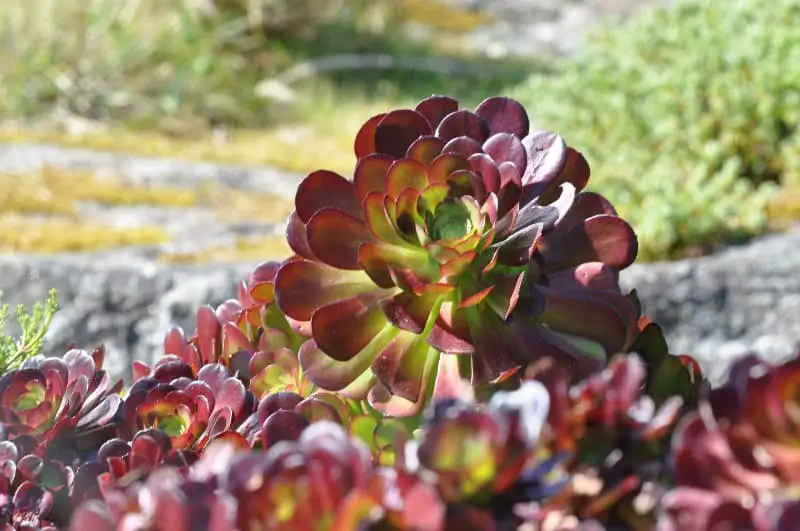
This is a fast growing succulent which will need to be repotted every few years. It produces clusters of dramatic rosettes, with multi-colored foliage. When the leaves are young they start out in a bright shade of green, progressing to a vibrant purple color as they mature. The result is rosettes which have purple outer leaves, and a contrasting green heart where younger leaves develop.

This is a low growing perennial which is also known as ‘Hens and Chicks’ because it sends out baby shoots which produce new plants. The scientific name of these purple succulents is ‘Sempervivum’. These succulents feature fleshy, pointed oval leaves. The foliage goes through color changes as it matures. It starts out as green and transforms through shades of lilac and violet until it becomes a deep red.
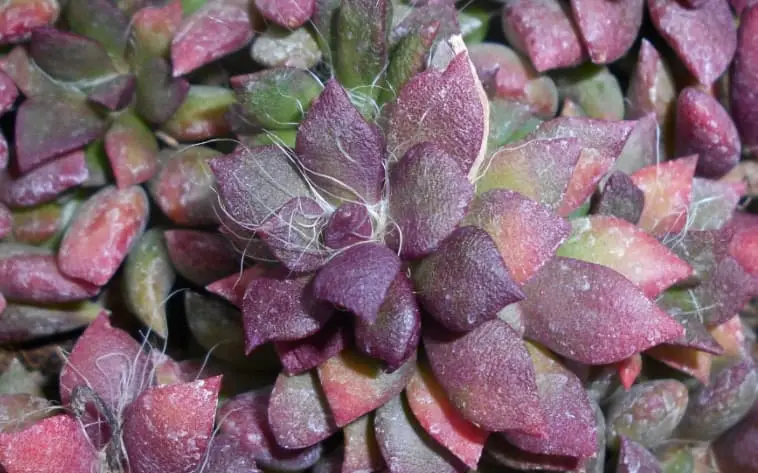
These purple succulents feature spoon-shaped leaves which grow in rosettes. The fleshy foliage starts out dark green and develops to a deep purple shade of plum as the plant matures. These South African natives also produce purple flowers in optimal conditions.
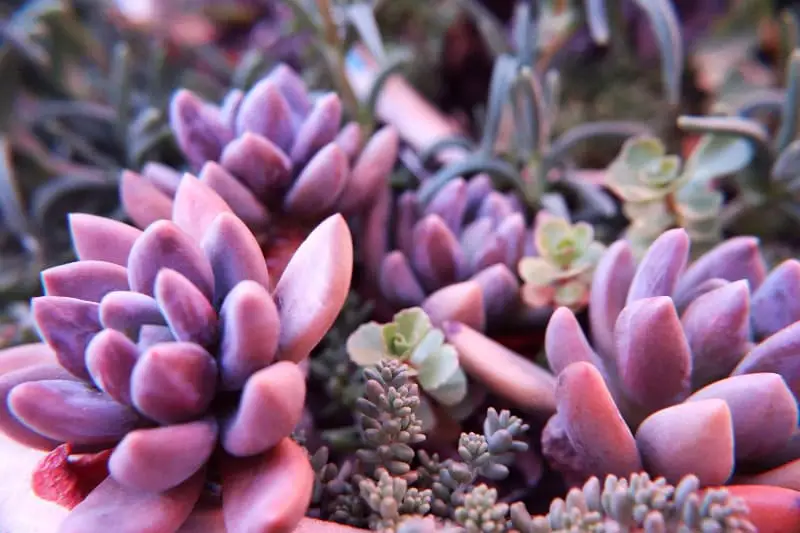
This is one of the more common purple succulents that is grown as a houseplant. It is native to Mexico, so it can be grown outdoors if your climate mimics hot and dry conditions. The leaves of this plant are paddle shaped, coming to a point at the tips. The foliage color is an olive shade of green, but the tips become flushed with lavender purple in bright light.

These award winning purple succulents received the ‘Award of Garden Merit’ from the Royal Horticultural Society, due to their outstanding beauty. They can be grown in small succulent pots when young, but will need to be transplanted as they mature. When fully grown, each rosette measures around 6 inches across, and stands at the end of woody branches. The fleshy foliage is a deep and dark plum color.
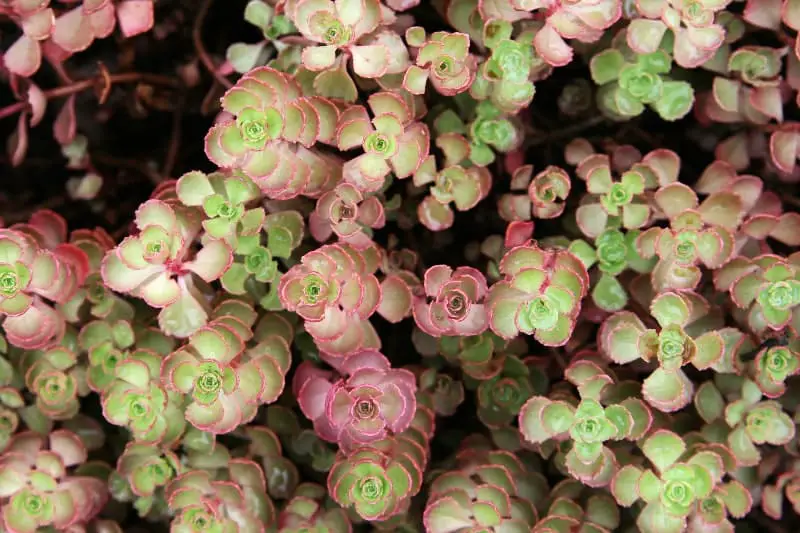
As you may expect from the name, these purple succulents have a creeping habit, clinging to the ground as they grow. They work well as ground cover because they can spread as far as 18 inches across. As easy-care succulents, these plants thrive on neglect. They produce red fleshy leaves which transform to a dark shade of purple through winter.

These plants are native to the deserts and grasslands of Mexico and the southern United States. They can be grown as trees, creepers, or bushes, and have large fleshy foliage which varies in color from blue-green through to deep violet. They are scientifically known as Opuntia macrocentra.
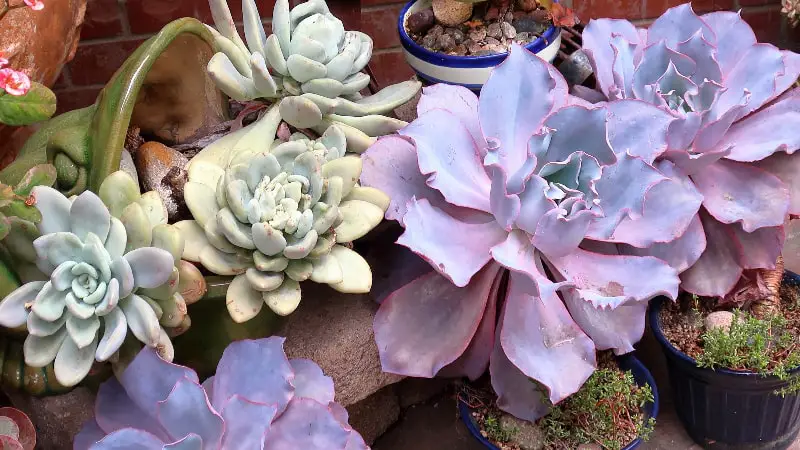
The rosettes produced on these purple succulents are slightly ruffled, resembling rose flowers. The foliage has a powder blue color which is flushed with lilac-pink. Each leaf is outlined with a dark purple edge.

These dramatic purple succulents produce lance shaped leaves which are stiff and pointed, arranged in a rosette shape. The foliage is green with dark purple spotting, but the spots are so dense that they all join together to create the look of solid purple succulents. These plants grow well in rock gardens in warm climates, or they can be kept as houseplants in cooler conditions.
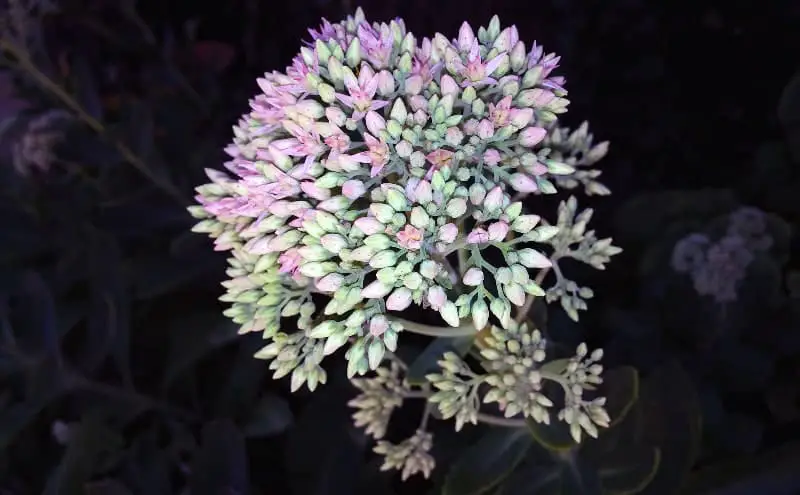
These hardy purple succulents can be grown outdoors all year around in warm to cool regions, though they can’t contend with frost. The plant is a low growing creeper, perfect for ground cover. It can also be grown indoors as a trailing houseplant. The spoon-shaped foliage is small and clustered, ranging in color from blue through to purple. Contrasting yellow flowers are produced in bright conditions.
There are a wide variety of purple succulents available, ranging from trees through to small houseplants. Examples include varieties of Echeveria, Aeoniums, and Sedums, and Stonecrops.
Succulent foliage can come in various colors, including purple. Purple succulents produce leaves in shades of pale lilac, lavender, violet, medium purple, dark plum and burgundy.
If your succulent is not supposed to have purple foliage, then this can indicate that the plant is not happy with its surroundings. Some succulents will turn purple if they experience a sudden temperature change.
Most succulents are easy to care for, and this includes purple succulents. They typically enjoy dry, sandy soil, and bright light. The color of purple succulents will be more intense when they are exposed to a high level of light.
Purple succulents are easy to care for and come in a wide range of types to suit the requirements of any gardener. Supply them with minimal water and plenty of bright light to enjoy the best color they have to offer.
You may enjoy these related articles:
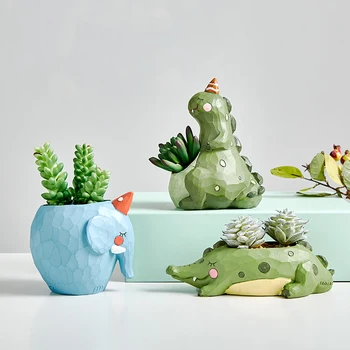



We provide a platform supported by gardening enthusiasts to share unique experience and knowledge.
We’ve pledged 5% of sales to the program which help more families have opportunity to have garden.
Every action we make has an impact on planet. Learn more about Million Compost Movement.
Join facebook community to connect, share passion and get support when you need.
Keep in mind that we may receive commissions when you click our links and make purchases. However, this does not impact our reviews and comparions. We try our best to keep things fair and balanced, in order to help you make the best choice for you.
As an Amazon Associate, we earn from qualifying purchases.
Sign up for gardening tips, activism awareness, exclusive offers and more!
© Garden Guidepost

Gardening tips, activism awareness, exclusive offers and more!